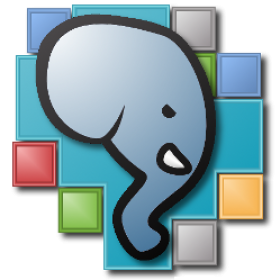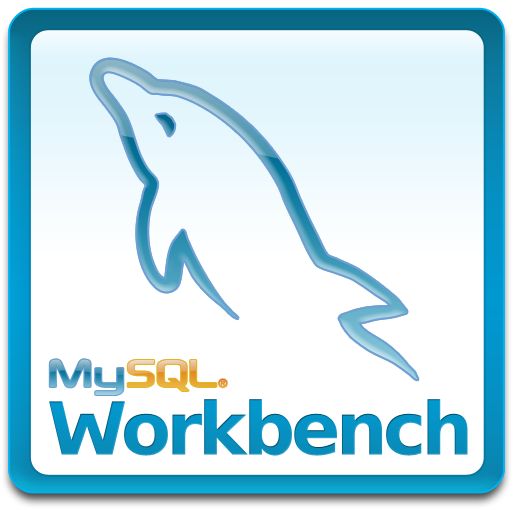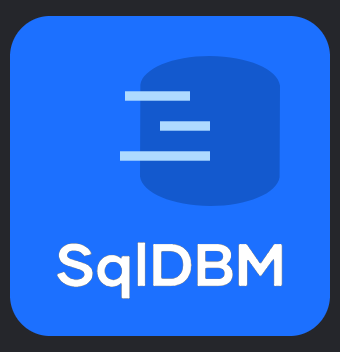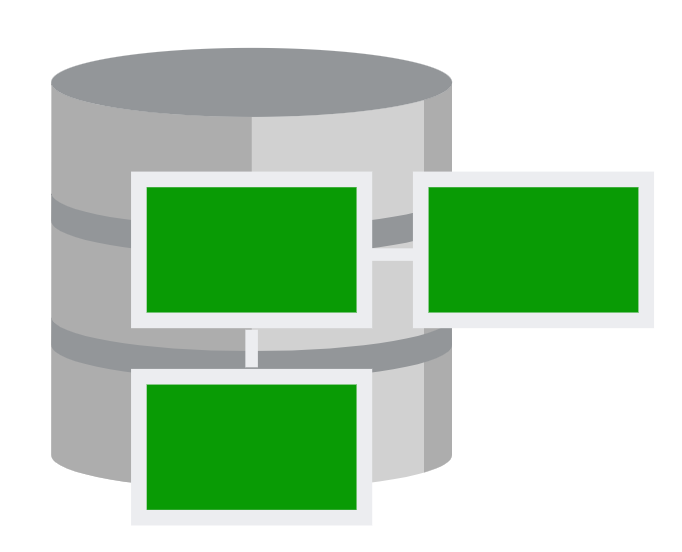 Key Takeaways
Key TakeawaysBest Data Modelling Tools:
- ER/Studio: Best for cross-platform enterprise data modeling with team collaboration
- DbSchema Free: Best for visual database design with drag-and-drop functionality
- Erwin Data Modeler: Best for unified structured and unstructured data modeling
- Archi: Best for enterprise architecture modeling with ArchiMate support
- SQL Database Modeler: Best for online collaborative database modeling without coding
- Oracle SQL Developer Data Modeler: Best for free multi-database modeling with Oracle integration
- IBM InfoSphere Data Architect: Best for robust enterprise-scale data modeling and integration
- MySQL Workbench: Best for MySQL-specific database design and administration
- Lucidchart: Best for cloud-based collaborative visual database modeling
- pgModeler: Best for PostgreSQL-specific open-source database modeling
Data modelling is the backbone of modern data management. It decides how your information is structured, stored, and accessed across organizations. Bad data modelling can become a bottleneck for organisations looking to scale.
This is why selecting the right data modelling tool is very important. It can directly impact your data ecosystem’s efficiency, scalability, and accuracy. There are many tools available in the market, but choosing the perfect fit can be overwhelming for teams just looking to start.
This blog highlights and compares the top 12 data modelling tools in 2025 to help you find a tool that fits all your needs
Table of Contents
Types of data modelling tools: Choose the right category for you
In this section, we have differentiated tools into categories based on different needs and organizational sizes. Before you hop into selecting a tool, let’s understand the category you fall into to narrow down your search.
Free & Open Source Champions
If you’re a startup, small business, or individual developer, you might be looking for a budget-friendly yet powerful data modelling solution. Free and open-source tools like pgModeler, DBeaver, and Archi offer robust features for designing, visualizing, and managing data models. These open-source tools get good community support and frequent updates.
Enterprise Powerhouses
Large organizations and enterprises operating at scale require industry-ready solutions that also meet their compliance needs. Tools like ERwin Data Modeler, ER/Studio, and IBM InfoSphere Data Architect are enterprise-grade software that may serve your need for complex data environments, metadata management, and regulatory compliance.
These platforms are designed for teams managing vast, mission-critical databases and who need reliable vendor support, collaboration, and security.
Cloud-Native & Collaborative
Modern organizations with distributed teams require tools that have real-time collaboration and seamless cloud integration. Solutions in this category, such as Hevo Data, Lucidchart, and SQL Database Modeler, enable users to design, transform, and manage data models directly in the cloud. These tools are ideal for businesses that need flexibility, accessibility, and easy sharing across locations.
Specialized & Niche Solutions
Some industries and use cases require a tailored approach for specific needs. Tools like Oracle, Navicat, and Moon fall into this category. They offer targeted features for Oracle, multi-DB, or NoSQL Databases.
Top 3 Free & Open-Source Data Modelling Tools
| Tool | Best For | Platform Support | Key Features |
| pgModeler | PostgreSQL modeling | Windows, Mac, Linux | Advanced PostgreSQL features, open-source, ER diagrams |
| MySQL Workbench | MySQL database design & admin | Windows, Mac, Linux | Visual design, SQL editor, forward/reverse engineering |
| Archi | Enterprise architecture modeling | Windows, Mac, Linux | ArchiMate modeling, open-source, visualization tools |
Hevo excels as a data modeling tool, offering seamless integration and transformation features. Effortlessly design, manage, and update your data models, ensuring accurate and real-time data flow to your analytics platforms.
Hevo automates complex data processes, saving you time and reducing manual errors. It streamline your entire data management workflow, making data modeling simpler and more efficient.
Get Started with Hevo for Free1. pgModeler

pgModeler is an open-source, free Data Modeling Tool for PostgreSQL that helps in constructing Database Models. If, due to any technical reason, the event fails, all your prior work will be restored. pgModeler also supports XML files, which means the user can handle the same database files in third-party software.
With the help of its simple and intuitive interface, users can quickly create and edit PostgreSQL Database models. Another feature of this tool that makes it suitable for your business is you can create your own extension for pgModeler without making any changes to the core code.
pgModeler works cross-platform, including Windows, Linux, and macOS.
Key features of pgModeler:
- Specialized support for modeling PostgreSQL database structures.
- Allows visual database modeling through diagrams rather than scripts.
- Supports logical, physical, and dimensional models.
- Checks models for issues before applying changes.
- Object triggers allow implementing custom behaviors.
- Features for model comparison, diff, and synchronization with live databases.
- Ability to merge and consolidate models from different sources.
- Migrates between different PostgreSQL versions by updating models.
Pros and Cons of pgModeler:
Pros:
- Allows both logical and physical modeling
- Model validation checks for issues
- Model compare and synchronization features
Cons:
- PostgreSQL exclusive, lacking support for other DBs
2. MySQL Workbench

MySQL Workbench is the perfect solution if you are looking for a free Data Modeling Tool. Most SQL Development & Server Configuration users, Database Architects, Developers, and Database Administrators trust MySQL Workbench over other Data Modeling Tools because it helps construct complicated ER models and can generate, run, and optimize SQL queries.
Moreover, the MySQL Workbench tool is compatible with all major operating systems, including Microsoft Windows, Linux, and Mac. It also supports both forward and reverse engineering features.
Key Features of MySQL Workbench:
- Allows you to model databases through an interactive diagramming EER modeler focused on the physical schema.
- Provides an integrated SQL editor for scripting and querying with syntax highlighting and code completion.
- Allows you to visually explore and edit existing database schemas through reverse engineering into an EER diagram.
- Features allow you to synchronize changes between visual models and the database through forward and reverse engineering.
- Built-in visual database reports on schema, data, queries and more aid documentation needs.
Pros and Cons of MySQL Workbench:
Pros:
- Available for free on major platforms like Windows, macOS, and Linux
- Incorporated SQL development interface
- Includes database administration capabilities
- Reporting features for documentation
Cons:
- MySQL-centric, lacking support for other DBs
- Weaker for collaborative modeling
3. Archi
Many Data Architects and Data Modelers recommend Archi over other free Data Modeling Tools as it can be used for analysis and visualization of the database architecture in different business sectors. Also, this is one of the most cost-effective solutions in the market with an open-source profile.
Archi Data Modeler supports ArchiMate language. Using Archi’s free Data Modeling Tool, you can get quick access to element information and alter ArchiMate’s viewpoint at any moment. It works cross-platform and allows users to build and customize canvas as per their data elements and its flow.
Key features of Archi:
- Archi is specifically designed to support the ArchiMate modeling language, allowing users to create models for enterprise architecture using ArchiMate concepts.
- Archi is compatible with multiple operating systems, including Windows, macOS, and Linux.
- Users can model relationships and dependencies between different elements in the architecture.
- Archi supports model versioning, allowing users to track changes over time.
- Archi includes an element catalog where users can define and manage the elements used in their architecture models.
Pros and Cons of Archi:
Pros:
- Supports ArchiMate, BPMN, UML and other standards
- Allows modeling of multiple architecture layers
- Good for high-level conceptual models
- Easy to get started for basic users
- Plug-in architecture to extend functionality
Cons:
- Limited visualization and diagramming features
- Lacks detailed database model techniques
Top 3 Enterprise Data Modelling Tools
| Tool | Best For | Key Features | Platform Support |
| ER/Studio | Cross-platform enterprise use | Advanced modeling, collaboration, and governance | Windows, Web |
| Erwin Data Modeler | Industry-leading enterprise tool | Comprehensive modeling, metadata management | Windows |
| IBM InfoSphere Data Architect | Robust enterprise integration | Integration, scalability, regulatory compliance | Windows, Linux |
4. ER/Studio

ER/Studio is a free data modeling tool for database administrators to identify data assets across multiple database systems quickly, construct data models, and track them. It accommodates both Logical and Physical Database Designs. Also, this Data Modeling Tool works cross-platform and supports Windows, Linux, and Mac devices.
The best part about ER/Studio is that it supports all display formats (HTML, PNG, JPEG, etc.) along with scripting and automation. It also allows running analysis for new modifications at the database level.
Key features of ER/Studio include:
- ER/Studio has compatibility with Oracle, MySQL, Microsoft SQL ServerSQL, IBM Db2, MongoDB, Snowflake, Google BigQuery, Teradata, and soon with Databricks.
- ER/Studio supports integration with Collibra, Silwood Safyr, MetaIntegration, Atlassian Jira, and WhereScape.
- It supports team collaboration and project version management that propels data modeling strategy.
- It allows both forward and reverse engineering, ensuring synchronization between the model and the actual database.
- ER/Studio allows both the import and export of model information from BI, ETL, and NoSQL platforms.
- The tool enables users to generate comprehensive documentation for their data models, including data dictionaries, diagrams, and reports.
Pros and Cons of ER/Studio:
Pros
- Supports a wide range of modeling techniques (logical, physical, dimensional, etc.)
- Robust visualization and diagramming capabilities
- Has reporting, documentation and metadata exchange
- Enables data lineage tracking and analysis
- Handles large, complex enterprise data models
Cons:
- Can be overkill for smaller modeling needs
- Collaboration features harder to use than cloud-based tools
- On-premise installation needs updates and server maintenance
5. Erwin Data Modeler
Erwin Data Modeler is another great option if you are looking for a free Data Modeling Tool. It helps users create Logical, Physical, and Conceptual Data Models at a minimal cost. One can discover, visualize, design, and deploy their Data Assets easily using this tool.
Erwin Data Modeler supports both structured and unstructured data regardless of its location. Further, with the help of its simple Graphical User Interface (GUI), businesses can automatically create Data Models and designs to improve efficiency, reduce cost and minimize database errors.
Key features of Erwin Data Modeler
- It provides a unified interface for visualizing structured or unstructured enterprise data, regardless of its location—whether stored in a relational or NoSQL database, a data warehouse, on-premises, or in the cloud.
- It automatically generates data models and database designs for improved efficiency and error reduction.
- It facilitates an integrated view of conceptual, logical, and physical data models.
- Security features such as user authentication, access controls, and encryption help safeguard sensitive data and models.
- Users can generate comprehensive reports and documentation from their data models.
Pros and Cons of Erwin Data Modeler
Pros:
- It offers team collaboration and efficient data model development.
- Erwin excels at analyzing existing databases and generating accurate data models.
- Erwin integrates seamlessly with various BI, ETL, and database platforms, ensuring a smooth workflow within your data ecosystem.
- Erwin facilitates both forward engineering (generating SQL scripts from the model) and reverse engineering (creating a model from an existing database).
Cons:
- Erwin primarily offers on-premise deployment options, which may not be ideal for organizations favoring cloud-based solutions.
6. IBM InfoSphere Data Architect
IBM InfoSphere Data Architect offers a quick and simple Data Model development facility and allows team collaboration. This free Modeling Tool is best for companies that require tools for Business Intelligence & Statistics. One can simplify and accelerate Database Integration Design and align services and Data Structures using IBM InfoSphere Data Architect.
This tool also allows users to import and export custom mapping. Furthermore, it supports Physical and Logical Data Models.
Key features of IBM InfoSphere Data Architect:
- IBM InfoSphere Data Architect enables users to discover the structure of heterogeneous data sources through metadata analysis.
- Users can create logical data models describing how their organization intends to collect data and how data objects are related.
- IBM InfoSphere Data Architect offers automated import and export of constant mappings within mapping models.
- The tool has incorporated support for version control systems, including Git and Microsoft Team Foundation Server (TFS).
- IBM InfoSphere Data Architect allows users to create models for various source systems, such as IBM Db2, IBM Informix, Oracle, Sybase, Microsoft SQL Server, MySQL, and Teradata.
Pros and Cons of IBM InfoSphere Data Architect
Pros:
- Very robust and scalable for large, complex models
- Advanced features like model merging, federation, etc.
- Sophisticated validation rules and checks
- Powerful visualization and diagramming capabilities
Cons:
- No cloud deployment option, on-premises only
Top 3 Cloud Data Modelling Tools
| Tool | Best For | Key Features | Cloud Support |
| Hevo Data | Automated pipelines & modeling | ETL, data integration, transformation | Fully cloud-native |
| Lucidchart | Collaborative visual modeling | Real-time diagrams, templates | Browser-based, SaaS |
| SQL Database Modeler | Online collaborative SQL modeling | ER diagrams, versioning, SQL export | Browser-based, SaaS |
7. Hevo Data
Hevo Data is a cloud-native platform specializing in automated data pipelines, ETL, and integrated data modeling. It enables users to build and manage data flows from diverse sources with minimal coding, making it ideal for organizations seeking a unified solution for data integration and modeling in the cloud. Real-time collaboration and automated schema management streamline workflows for distributed teams.
Key Features for Data Modelling
- Hevo organizes and transforms raw data into structured, analytics-ready data, supporting both extraction and transformation steps crucial for data modelling workflows
- Users can build SQL-based models directly within Hevo, supporting both full and incremental models to suit different data refresh needs.
- Hevo facilitates mapping data between sources and destinations, aligning incoming data with the target data model’s schema.
- Hevo provides basic visualization tools to help users understand and validate their data models before loading.
Pros
- Hevo’s visual interface and SQL-based modelling lower the barrier for non-technical users to design and manage data models.
- Supports both full and incremental model refreshes
- Easily models data from a wide variety of sources, consolidating it into unified schemas.
Cons
- Hevo excels in ETL-centric environments; organizations needing deep logical/physical modelling or complex entity relationships may find it less suitable.
- Complex models may require manual mapping and intervention.
8. Lucidchart

Lucidchart is a cloud-based free Data Modeling Tool that requires no additional need for downloading bulky software. You can create Data Models easily using this online tool. It consists of intelligent features that make it a top choice when choosing a free Modeling Tool. Also, its interface is easy to navigate and supports multiple information assets.
If you are looking for a tool that will help increase productivity, go for Lucidchart. You can easily style shapes and expand your canvas using this tool. Users can also add necessary context, thoughts, or feedback using the notes function in Lucidchart.
Key Features of Lucidchart:
- As a SaaS platform, lets teams visually diagram databases together.
- User-friendly editor makes database modeling approachable for non-experts.
- Models common DBs like MySQL, SQL Server, Oracle, MongoDB and more.
- ER diagrams, ORM diagrams, data flow diagrams and more model types available.
- Color coding, custom themes and flexible layouts make models readable.
- Integrates with popular dev platforms. Export to PDFs, images etc.
- Modeling templates, using snippets, linking between documents.
- Stores history of changes and sets user access controls.
Pros and Cons of Lucidchart:
Pros:
- Intuitive web-based visual interface
- Real-time collaboration capabilities
- Support for a wide variety of databases
- Diagram flexibility with ER, flowcharts etc
- Excellent visualization and styling options
Cons:
- Lacks advanced customizations of full modeling tools
- Weaker at handling complex queries and code
- No entity relationship modeling validation
9. SQL Database Modeler

SQL Database Modeler allows Developers to construct a SQL Database online without writing any code. It is much easier to build scripts and import them using this tool. SQL Database Modeler is compatible with MS SQL Server and MySQL.
Using its user-friendly interface, you can create and make quick changes to the tables. You and your workgroups can also collaborate on projects seamlessly. Another feature of SQL Database Modeler is it supports different view modes.
Key Features of SQL Database Modeler:
- SqlDBM automatically creates a database model from your existing database or data warehouse.
- The version history feature allows users to compare changes between any two save points and open and recover a project from a previous state.
- Any number of users can work concurrently on a project and create a DB schema without altering the project.
- It supports advanced data lineage practices through interactive, graphical representations that are easy to understand, even for non-technical users.
Pros and Cons of SQL Database Modeler:
Pros:
- Allows both physical and logical modeling
- Good visualization with entity relationship diagrams
- Model validation and checking functionality
- Documentation and reporting features
- Enables collaborative modeling
- Highly customizable and extensible
Cons:
- Mostly focused on SQL databases, lacks support for NoSQL databases
- Weaker at handling extremely large, enterprise-level database models
Top 3 Niche Modelling Tools
| Tool | Best For | Key Features | Platform Support |
| Oracle SQL Developer Data Modeler | Oracle DBAs & developers | Logical/physical modeling, reporting | Windows, Mac, Linux |
| Navicat Data Modeler | Multi-DB environments | ER diagrams, forward/reverse engineering | Windows, Mac, Linux |
| Moon Modeler | NoSQL/Document DB specialists | JSON schema, NoSQL diagrams, and visualization | Windows, Mac, Linux |
10. Oracle SQL Developer Data Modeler

Oracle SQL Developer Data Modeler is another outstanding free Data Modeling tool that enables businesses to capture, manage, and gain insights from the data and boost productivity. It supports forward and reverse engineering and collaborative development among teams. Another feature of Oracle SQL Developer Data Modeler is it works with both traditional and cloud settings.
It is a free graphical tool that can be used to create, browse and edit different data type models. It offers a full spectrum of Data Models which includes Logical, Relational, Physical, and Multi-dimensional Data Type Models.
Key Features of Oracle SQL Developer Data Modeler:
- Supports a wide range of models such as logical, relational, dimensional, multi-dimensional, and more.
- Allows designing ER diagrams, relational schema, data maps etc. Visually represent existing databases too.
- It allows collaborative modeling facilitating teams to work together on data models.
- Users can create and customize reports based on the data model statistics.
- Forward and reverse engineering allows synchronizing designs and databases.
Pros and Cons of Oracle SQL Developer Data Modeler:
Pros:
- Free and included with Oracle SQL Developer suite
- Export data model to a variety of formats, including DDL, XML, and XMI.
- Platform support for multiple databases
- Integrates closely with other Oracle developer tools
Cons:
- Primarily focused on structured relational models
- Weaker NoSQL and unstructured data support
11. Navicat Data Modeler

Navicat Data Modeler supports multiple database systems, including MySQL, PostgreSQL, SQL Server, and more. Its intuitive ER diagramming, forward and reverse engineering, and cross-platform compatibility make it a strong choice for teams managing diverse database environments.
Key Features of Navicat Data Modeler
- Design conceptual, logical, and physical models for a wide range of databases, including MySQL, MariaDB, Oracle, PostgreSQL, SQL Server, SQLite, and various cloud platforms.
- Build and manage multiple models within a single workspace, supporting cross-model management and collaboration.
- Seamlessly convert databases to models and vice versa, keeping models and databases synchronized.
- Offers advanced diagramming features.
- Enables team collaboration through Navicat Cloud.
Pros
- Supports a full range of modelling methods (conceptual, logical, physical)
- User-friendly GUI with powerful diagramming and editing tools.
- Works seamlessly with cloud databases and other Navicat products.
Cons
- Premium features and enterprise versions can be expensive for individual users or small teams.
- May experience lag or slow performance with very large or complex models, especially on less powerful machines.
- The interface and feature set can be overwhelming for beginners.
- Limited NoSQL Support.
12. Moon Modeler
Moon Modeler is tailored for NoSQL and document database specialists, with a focus on MongoDB. It provides visual modeling for JSON schemas, supports unique NoSQL structures, and offers clear visualization for complex document-based data models. This makes it invaluable for projects leveraging modern NoSQL technologies.
Key Features of Moon Modeler
- Specializes in modelling for NoSQL databases like MongoDB and other document-based and graph databases as well.
- Provides an intuitive visual interface for designing JSON schemas and document structures.
- Also supports relational databases like PostgreSQL, MariaDB, MySQL, and Couchbase.
- Allows exporting models to JSON, PDF, or image formats for easy sharing and documentation.
Pros
- Best for NoSQL
- User-friendly, Simple, and clean interface for schema design.
- Editing is accessible to both technical and non-technical users.
Cons
- Advanced features require a paid license, which could be a drawback for small teams
- Less suitable for relational modelling due to limited features.
- Lacks advanced collaboration, version control, and governance features.
Check out Hevo, a no-code data pipeline that allows you to migrate data from any source to your preferred destination with just a few clicks.
Start your 14 days trial now for free!How to Choose the Right Data Modeling Tool?
Keep in mind the following points before choosing a data modeling tool for your organization:
- User-friendliness: Whether you are a beginner or an experienced user, look for a tool that has an intuitive and user-friendly interface that also offers drag-and-drop functionality for easy data model creation.
- Integrations: Choose a tool that supports integrations with various BI tools, ETL platforms and version control systems.
- Compatibility: Ensure that your free data modeling tool is compatible with different database management systems such as MySQL, PostgreSQL, Oracle, and SQL servers, to name a few.
- Forward and Reverse Engineering: Make sure the data modeling tool supports both forward and reverse engineering which is crucial for maintaining consistency between your model and the actual database.
- Collaboration Features: Data modeling is a team-based project. Look for a tool that allows for team collaboration and the ability to share and comment on models.
- Security: Never forget to ensure the security policies and data modeling best practices that your tool follows. It is the most important feature to consider when handling sensitive data.
Three Types of Data Modeling
Here are the three different types of Data Models that help businesses determine what data is needed, how it should be organized, and how data associations must be established between them:
Logical
Companies involved in Data Warehousing often use Logical Data Models to define how the system must be organized regardless of the DBMS. The role of Logical Data Models is to develop a technical map of rules and differentiate relationships and attributes for each entity. These Data Models are generally used by Data Architects and Business Analysts.
Conceptual
Business Stakeholders and Data Architects design Conceptual Data Models to define the business concepts and rules. This type of Data Model focuses more on defining what the database system contains and not its processing flow. Such an arrangement helps in aligning all the concerned team members on the same project and on the same data requirements.
Physical
Database Administrators (DBA) and Developers design and use Physical Data Models for the implementation of the actual database structure. These Data Models function as the last step in the Data Modeling process and they define precisely how the system will be implemented once the company starts using the DBMS system.
You can also explore the concept of ETL data modeling and the various techniques involved in ETL data modeling.
What are the Advantages of Data Modeling Tools?
Data Modeling Tools can take a complicated software process and turn it into an easy-to-understand visual. Data Modeling Tools has several benefits including the ones mentioned below.
- Use Data Modeling Tools to organize massive data and make it simpler to find information.
- Seek visual representations of complex topics to better understand your business.
- Reduce software and database development pitfalls.
- Increase enterprise-wide uniformity in documentation and system architecture.
- Enhance the performance of your application and database.
- Streamline data mapping across the enterprise.
- Improve the flow of information between the development and BI teams.
- At the conceptual, logical, and physical levels, Data Modeling Tools simplify and accelerate the database design process.
Related Reads:
- Best Strategies to Create & Maintain A High Level Data Model Simplified 101
- Data Modeling and Visualization: A Detailed Comparison
- Enterprise Architect Data Modeling 101: Definition, Phases, Techniques, & Best Practices
Conclusion
In this article, you got a list of Data Modeling Tools and learned about various aspects of Data Modeling. You now know what are the advantages of Data Modeling and the differences between conceptual, logical, and physical data models. In addition, you also understood the key factors that help in selecting the right Data Modeling Tool.
To better understand the underlying systems, explore the key differences between OLTP and OLAP in our detailed comparison blog.
Apart from maintaining schemas and databases, extracting complex data from a diverse set of data sources can be quite challenging. This is where a simpler alternative like Hevo can save your day! Sign up for a 14-day free trial with Hevo.
Data Modeling Tools FAQs
1. What is a Data Modeling Tool?
Data Modeling Tool is a tool that provides link between the data and various levels of data models. It makes data modeling quick and efficient. When a data model is applied in a system, it strengthens and enforces the business principles that it represents.
2. Which tool is best for Data Modeling?
Tools best for data modeling are—ER/Studio, DbSchema Free, Erwin Data Modeler, Archi, SQL, Database Modeler, Oracle SQL Developer Data Modeler, IBM InfoSphere Data Architect, MySQL Workbench, Lucidchart, and pgModeler.
3. What are the 3 types of Data Modeling?
The main three types of Data Modeling are—Logical, Conceptual, and Physical.



